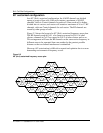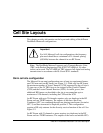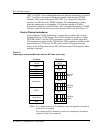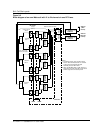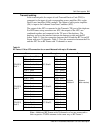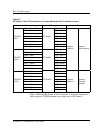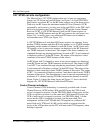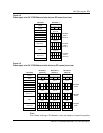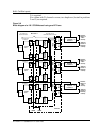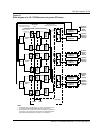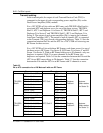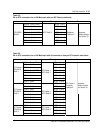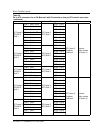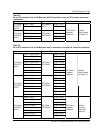
3-8
Cell Site Layouts
411-2021-111 Standard 01.01 June 1996
120
°
STSR cell site configuration
The Metrocell in a 120
°
STSR configuration uses at least two equipment
frames, one CE Frame and one RF frame (see Figure 3-4). Each TRU/DPA
Shelf and its associated ATC on the RF frame support one of the three sectors.
With only one RF frame, the maximum number of Voice Channels (VCH)
supported by each sector is six since two of the eight TRUs on the TRU shelf
have to be assigned as the Control Channel (CCH) and the Locate Channel
Receiver (LCR). A 120
°
STSR Metrocell with one RF Frame requires six
antennas; one TX/RX antenna and one RX only antenna for each sector (see
Figure 3-6). As traffic grows, two additional RF frames can be added to
accommodate more VCHs (see Figure 3-5).
A 120
°
STSR Metrocell with three RF Frames requires six antennas. It may
be three TX/RX antennas and three RX only antennas or six TX/RX antennas
depending on the number of channels in each RF Frame. An RF Frame with
20 channels or less in one sector requires one duplexer in the RF Frame and
one TX/RX antennas for that sector. The outputs of the three combiners are
combined through one phasing transformer (located at ATC 2) and connected
to Duplexer position 2 in that RF Frame. The output of the duplexer is then
connected to the main TX/RX Antenna of that sector).
An RF Frame with 21 channels or more in one sector requires two duplexers
in the RF Frame and two TX/RX antennas for that sector. The outputs of ATC
1 and ATC 2 are combined through one phasing transformer (located at ATC
2) and connected to Duplexer position 2 in that RF Frame. The output of the
duplexer is then connected to main TX/RX Antenna of that sector. The output
of ATC 3 is connected to Duplexer position 3 and then to the diversity TX/RX
Antenna of that sector. This arrangement is used to meet the requirement of a
minimum of 21 channel spacing (630 kHz) between the channels in one RF
Frame. Figure 3-5 shows the frame layout and Figure 3-7 shows the block
diagram of a 120
°
STSR Metrocell with three RF Frames.
Control Channel redundancy
Control Channel (CCH) redundancy is commonly provided with a Locate
Channel Receiver (LCR) backup. With one RF Frame, the CCH of each
sector is assigned to position 1 on the TRU/DPA Shelf of that sector and the
LCR is assigned to position 4 on the same shelf. With three RF Frames, the
CCH of each sector is assigned to position 1 on TRU/DPA Shelf 1 of that
sector and the LCR is assigned to position 4 on the same shelf. This
arrangement will have the CCH and the LCR supplied on a different DC
power feed and a TCM card. No RF coaxial switch is required since the
cavity of the LCR position on the ATC will tune to the CCH frequency when
backup is required.



